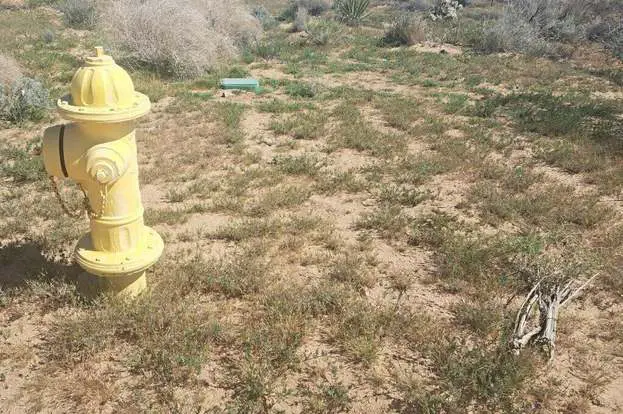A standard fire hydrant is typically around 3 feet tall. Fire hydrants are a vital part of firefighting infrastructure.
Fire hydrants play a crucial role in providing quick access to water for firefighters during emergencies. They are usually painted in bright colors for visibility and convenience. Fire hydrants are strategically placed throughout neighborhoods and cities to ensure quick response times in case of fires.
It is important to keep fire hydrants clear of any obstructions to allow easy access for firefighters during emergencies. Fire hydrants are essential tools in firefighting and public safety efforts.

The Purpose Of Fire Hydrants
The Purpose of Fire Hydrants:
Fire hydrants play a crucial role in providing quick access to water for firefighters during emergencies. Its main purpose is to supply high-pressure water flow to extinguish fires efficiently.
Importance Of Fire Hydrants:
- Vital role: Fire hydrants are essential for firefighters to quickly access water during fire emergencies.
- Safety: They help in controlling and extinguishing fires promptly, helping to minimize damage.
- Emergency response: Fire hydrants are strategically placed in urban areas to ensure fast response times in case of fires.
Location And Distribution:
| Location | Distribution |
|---|---|
| Near buildings: Usually installed close to buildings for easy access during fires. | Strategic placement: Distributed strategically throughout a city to cover all areas effectively. |
| Visible markers: Marked with easily noticeable colors or symbols for quick identification. | Regular maintenance: Checked regularly to ensure functionality and readiness. |

Credit: www.amazon.com
Typical Fire Hydrant Sizes
Typical Fire Hydrant Sizes can vary in height, with specific standards for these crucial emergency fixtures. Understanding the dimensions of fire hydrants is essential for fire departments and city planners.
Standard Heights
Fire hydrants are typically between 3 and 5 feet tall, making them easily visible and accessible for emergency personnel.
Variations In Heights
While the average height falls within the standard range, some regions may have taller or shorter hydrants based on local regulations or infrastructure needs.
Determining Fire Hydrant Heights
Fire hydrant heights are determined based on the location’s infrastructure and accessibility for firefighters in case of emergencies. Usually, fire hydrants are installed at a height of 18 inches above ground level to ensure easy access and visibility. This standard ensures that firefighters can quickly connect their hoses to the hydrants during firefighting operations.
Regulatory Standards
The height of a fire hydrant is determined by strict regulatory standards set by local, regional, and national authorities. These standards are designed to ensure uniformity and visibility, allowing emergency responders to quickly locate and access hydrants in case of fires. Compliance with these standards is crucial to maintain the effectiveness of fire hydrant systems.
Factors Affecting Height
Several factors affect the height of fire hydrants. Terrain variations, such as elevated or low-lying areas, may require adjustments in hydrant height to ensure accessibility. Additionally, the presence of snow in colder regions or the need to prevent damage from vehicles can influence the determination of hydrant heights. Accessibility for maintenance and operation also plays a role in the determination of fire hydrant height.

Credit: www.amazon.com
Measuring Fire Hydrant Heights
When it comes to fire hydrants, their heights play a crucial role in ensuring that they are easily accessible and visible in case of emergencies. Accurate measurement of fire hydrant heights is important for both installation and maintenance purposes. In this article, we will explore the various tools and techniques used to measure fire hydrant heights, as well as the importance of accuracy and precision in these measurements.
Tools And Techniques
Measuring the height of a fire hydrant requires the use of specific tools and techniques. There are a variety of tools available that can help in this process, including:
- Tape measure: This is a commonly used tool for measuring the height of objects. It is practical and easy to use, making it ideal for measuring fire hydrants.
- Laser distance measurer: This tool utilizes laser technology to accurately measure distances. It can be used to measure the height of a fire hydrant from a distance, providing ease and precision.
- Inclinometer: An inclinometer is a device that can measure the angle of an object relative to the ground. It can be used to measure the angle of a fire hydrant and calculate its height using basic trigonometry.
When utilizing these tools, it is important to follow the correct techniques to ensure accurate measurement. Proper alignment and position of the tools are key to obtaining precise measurements. It is recommended to take multiple measurements and calculate the average to increase reliability.
Accuracy And Precision
When measuring fire hydrant heights, accuracy and precision are of utmost importance. Accuracy refers to how close the measured value is to the true value, while precision relates to the consistency and reproducibility of the measurements.
For fire hydrant measurements, accuracy is vital to ensure that the height is suitable for easy access during emergencies. Incorrect measurements can lead to a hydrant being too low or too high, making it difficult for firefighters and other emergency personnel to connect hoses or access the water supply.
Precision is crucial to maintain consistency in measurements. Consistently precise measurements enable uniformity in hydrant heights throughout a particular area, ensuring easy identification for emergency responders.
In conclusion, measuring fire hydrant heights requires the use of specific tools and techniques such as tape measures, laser distance measurers, and inclinometers. It is essential to achieve both accuracy and precision in these measurements to ensure the effectiveness and efficiency of fire hydrants during emergencies.
The Impact Of Fire Hydrant Heights
Fire hydrant heights play a crucial role in fire emergencies, typically standing around 2 to 3 feet tall. This height ensures easy access for firefighters to quickly connect hoses during firefighting operations, aiding in efficient and effective water supply.
Accessibility For Emergency Services
Fire hydrants are essential for emergency services to quickly and efficiently combat fires. The height of a fire hydrant has a direct impact on its accessibility for these services. Ensuring that fire hydrants are easily reachable is crucial for firefighters. When a fire breaks out, time is of the essence, and every second matters. A fire hydrant positioned at an inconvenient height can delay the firefighting efforts, potentially leading to devastating consequences.Public Safety Considerations
The height of a fire hydrant also has implications for public safety. An easily visible and accessible fire hydrant promotes public awareness and aids in emergency preparedness. In times of crisis, being able to quickly locate and use a fire hydrant can make a significant difference in preventing the spread of a fire and potentially saving lives. Moreover, the size and positioning of a fire hydrant play a crucial role in its effectiveness. Accessibility for maintenance personnel is also a key consideration. Properly maintained hydrants ensure that they are in good working condition, ready to provide water supply to firefighters when needed. Here are a few important points related to the impact of fire hydrant heights:- Fire hydrants should be positioned at a height that allows easy access for firefighters, without the need for excessive bending or use of additional tools.
- Hydrants should be clearly visible and easily recognizable to both emergency services personnel and the general public.
- Regular maintenance and inspection of fire hydrants are essential to ensure their functionality and accessibility.
- Proper signage and markings can further enhance the visibility and accessibility of fire hydrants.
- An adequate supply of water pressure is vital for effective firefighting, so hydrants should be positioned at a height that allows for efficient flow of water.

Credit: www.upworthy.com
Frequently Asked Questions On How Tall Is A Fire Hydrant
How Tall Is A Fire Hydrant On Average?
A typical fire hydrant measures about 3. 5 feet in height from the ground to the top of the hydrant.
What Is The Purpose Of A Fire Hydrant’s Height?
The height of a fire hydrant is designed to ensure easy access and visibility for firefighters during emergencies.
Does The Height Of A Fire Hydrant Vary?
Yes, the height of a fire hydrant can vary slightly depending on the manufacturer or the specific location.
Are There Any Regulations Regarding Fire Hydrant Height?
Yes, there are regulations that specify the minimum and maximum allowable height for fire hydrants to ensure consistency and accessibility.
Can Fire Hydrant Height Affect Fire Safety?
The height of a fire hydrant is crucial for connecting hoses and reaching water easily, which directly impacts fire safety measures.
Conclusion
Fire hydrants are generally around 3 feet tall, but can vary based on regulations and region. Understanding the dimensions is crucial for maintenance and emergency response. Whether for safety concerns or municipal compliance, knowing the height of a fire hydrant is essential.
Always consult local authorities for specific measurements.